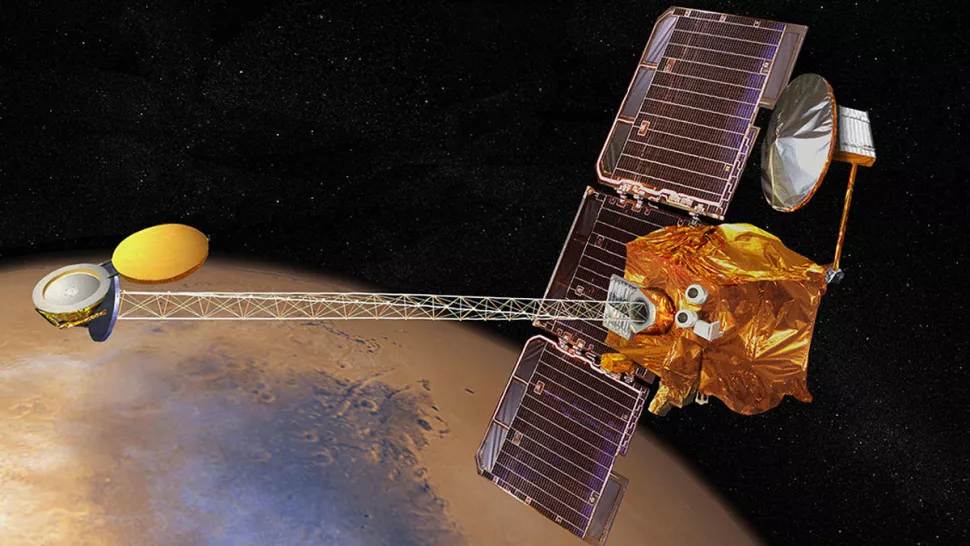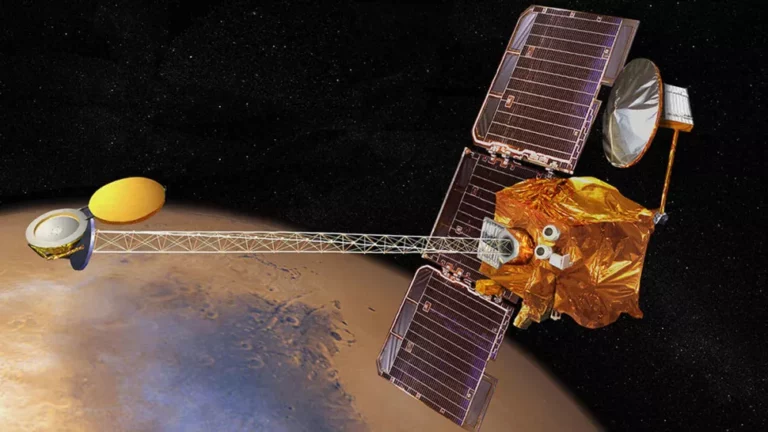NASA is probing a long-serving Mars orbiter to unravel the mystery of missing fuel.
NASA was concerned that, after 20 years, the Mars Odyssey orbiter may be running on empty.
NASA and Lockheed Martin Space engineers have successfully measured the fuel supply of the Mars Odyssey orbiter, the oldest Mars orbiting spacecraft, without using a fuel gauge. Calculations had suggested that the spacecraft could be running out of fuel, as estimates from 2021 and 2022 indicated that the orbiter had exhausted its propellant much faster than expected.

However, after investigating the “missing fuel,” scientists concluded that the fuel was never missing in the first place. This means that the Mars Odyssey orbiter should have enough propellant to continue its mission until the end of 2025. Over its 22 years in space, the Mars Odyssey orbiter has completed over 94,000 orbits of Mars and made many impressive discoveries, including the detection of water ice under the planet’s surface that could be useful for future astronauts.
NASA measures the remaining fuel supplies of Odyssey by heating up its two propellant tanks to determine how fast they reach a specific temperature, indicating the level of fuel they contain. This method is similar to an empty teapot heating up faster than a full one. According to a statement by NASA, an empty fuel tank should hit the target temperature faster than a full one. In 2021, the test showed that Odyssey had only 11 pounds (5 kg) of propellant left, which was less than the expected fuel consumption.
Subsequently, in January 2022, the NASA team used the same method again and found that Odyssey had even less remaining fuel than previously predicted, just 6 pounds (2.8 kg) of hydrazine. If these results are correct, Odyssey would run out of fuel in less than a year. However, the engineers were surprised by the discrepancy between the expected and actual results and conducted a more in-depth investigation, revealing new information about how the fuel system aged during the spacecraft’s flight
So where did Odyssey’s “missing fuel” go?
Lockheed Martin Space engineers were brought in by NASA Jet Propulsion Laboratory (JPL) scientists after calculations showed that the Mars Odyssey Orbiter may be running low on fuel. The engineers not only built Odyssey but also maintain its mission operations and provide engineering support for the craft. Odyssey’s project manager at JPL, Joseph Hunt, stated that the team first checked for leaks or fuel overuse before investigating the measuring process.
To assess the issue, the JPL/Lockheed Martin Space team consulted spacecraft propellant estimation consultant, Boris Yendler, who found that the missing fuel was due to Odyssey’s use of fuel to maintain optimal operating temperatures and protect systems from the cold of space. He suspected that a source on Odyssey was adding heat to its fuel, which caused temperatures to rise faster during the fuel tank heating test and resulted in inaccurate fuel measurements. The team eventually discovered that heaters along an Odyssey fuel line were warming connected propellant tanks, leading to lower fuel measurements than the actual amount.
The team then accounted for this in their method of measurement and factored in more complex fluid dynamics to determine that Odyssey had about 9 pounds (4 kg) of hydrazine left. Despite using solar panels to power its systems and reaction wheels to stay pointed toward Mars, Odyssey does use fuel to keep its systems at optimal operating temperatures.
Hydrazine is utilized by Odyssey when it needs to decrease momentum in its reaction wheels after completing a full orbit. This is achieved by releasing small, accurately measured bursts of propellant through the thrusters. This usage of hydrazine is limited, allowing the spacecraft to have enough fuel for several additional years.
The team acknowledges that the calculated remaining fuel may change as they enhance their measurements, but they are confident in their improved understanding of the craft. As Jared Call, Odyssey’s mission manager at NASA JPL, stated, their exploration of the engineering system is comparable to the scientific discovery process, in which unexpected findings emerge with continued observation.
Do not forget to share your opinion with us to provide you with the best posts !




0 Comments